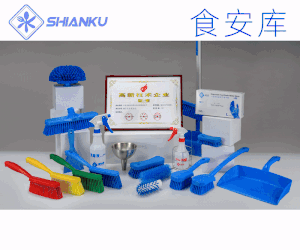南湖新聞網(wǎng)訊 近日,華中農(nóng)業(yè)大學(xué)資源與環(huán)境學(xué)院生物礦化課題組首次提出在水稻單細(xì)胞的細(xì)胞壁中,硅可以和半纖維素組分中的木葡聚糖共價交聯(lián)形成有機(jī)硅復(fù)合物,進(jìn)而改善細(xì)胞壁的力學(xué)性能和結(jié)構(gòu)穩(wěn)定性。相關(guān)研究成果發(fā)表在Carbohydrate Polymers上。
硅是地殼中含量第二豐富的元素,也是水稻生長的必需營養(yǎng)元素,能幫助水稻緩解各種非生物和生物脅迫。課題組從最初發(fā)現(xiàn)水稻植株中除了無機(jī)的二氧化硅外,細(xì)胞壁上還存在一種與半纖維素結(jié)合的微量有機(jī)硅(He et al., New Phytol., 2013; 2015),并對水稻抵抗重金屬鎘脅迫(Liu et al., New Phytol., 2013;Ma et al., New Phytol., 2015)具有重要的生物學(xué)功能。然而,細(xì)胞壁中半纖維素組分眾多,硅到底與其中何種組分交聯(lián),一直是研究中的“攔路虎”,成為難以攻克的“瓶頸”問題。
為了進(jìn)一步確定有機(jī)硅與半纖維素交聯(lián)的組分,課題組又經(jīng)過五年艱難摸索,聯(lián)合借助了電感耦合等離子體質(zhì)譜(ICP-MS)和X射線光電子能譜(XPS)分析了半纖維素組分中含量最高的木聚糖和木葡聚糖上硅含量和化學(xué)組成;基質(zhì)輔助激光解吸電離飛行時間質(zhì)譜(MALDI-TOF MS)測定了木葡聚糖和木聚糖的寡糖釋放量;原子力顯微鏡(AFM)液下成像活細(xì)胞,并借助AFM峰值力定量納米力學(xué)成像(PF-QNM)針尖修飾的木葡聚糖-1,4-內(nèi)切葡聚糖酶(XEG)和1,4-b-內(nèi)切木聚糖酶與纖維素絲表面的單分子粘附力,最終確定了硅主要與半纖維素中的木葡聚糖共價結(jié)合(圖1),從而增強(qiáng)對纖維素酶解的抗性(圖2),并改善了細(xì)胞壁的納米機(jī)械性能。該研究顯著地推動了植物硅營養(yǎng)研究的進(jìn)程,并對理解硅元素的植物營養(yǎng)作用具有深刻的理論意義。
該研究由國家自然科學(xué)基金(31672222 和31172027)資助,論文第一作者為博士研究生蒲軍保,王荔軍教授和張文君副教授為共同通訊作者。
【英文摘要】
Plant cell walls exhibit excellent mechanical properties, which form the structural basis for sustainable bioresources and multifunctional nanocelluloses. The wall nanomechanical properties of living cells through covalent modifications of hybrid inorganic elements, such as silicon, may confer significant influence on local mechano-response and enzymatic degradation. Here, we present a combination of ex situ measurements of enzyme-released oligosaccharide fragments using MALDI-TOF MS and in situ atomic force microscopy (AFM) imaging through PeakForce quantitative nanomechanical mapping of tip-functionalized single-molecule enzyme-polysaccharide substrate recognition and the nanoscale dissolution kinetics of individual cellulose microfibrils of living rice (Oryza sativa) cells following silicate cross-linking of cell wall xyloglucan. We find that xyloglucan-bound silicon enhances the resistance to degradation by cellulase and improves the wall nanomechanical properties in the elastic modulus at the single-cell level. The findings establish a direct link between an inorganic element of silicon and the nanoscale architecture of plant cell wall materials for sustainable utilization.
文章鏈接見:https://doi.org/10.1016/j.carbpol.2021.118057











 行業(yè):
行業(yè):






 魯公網(wǎng)安備 37060202000128號
魯公網(wǎng)安備 37060202000128號



